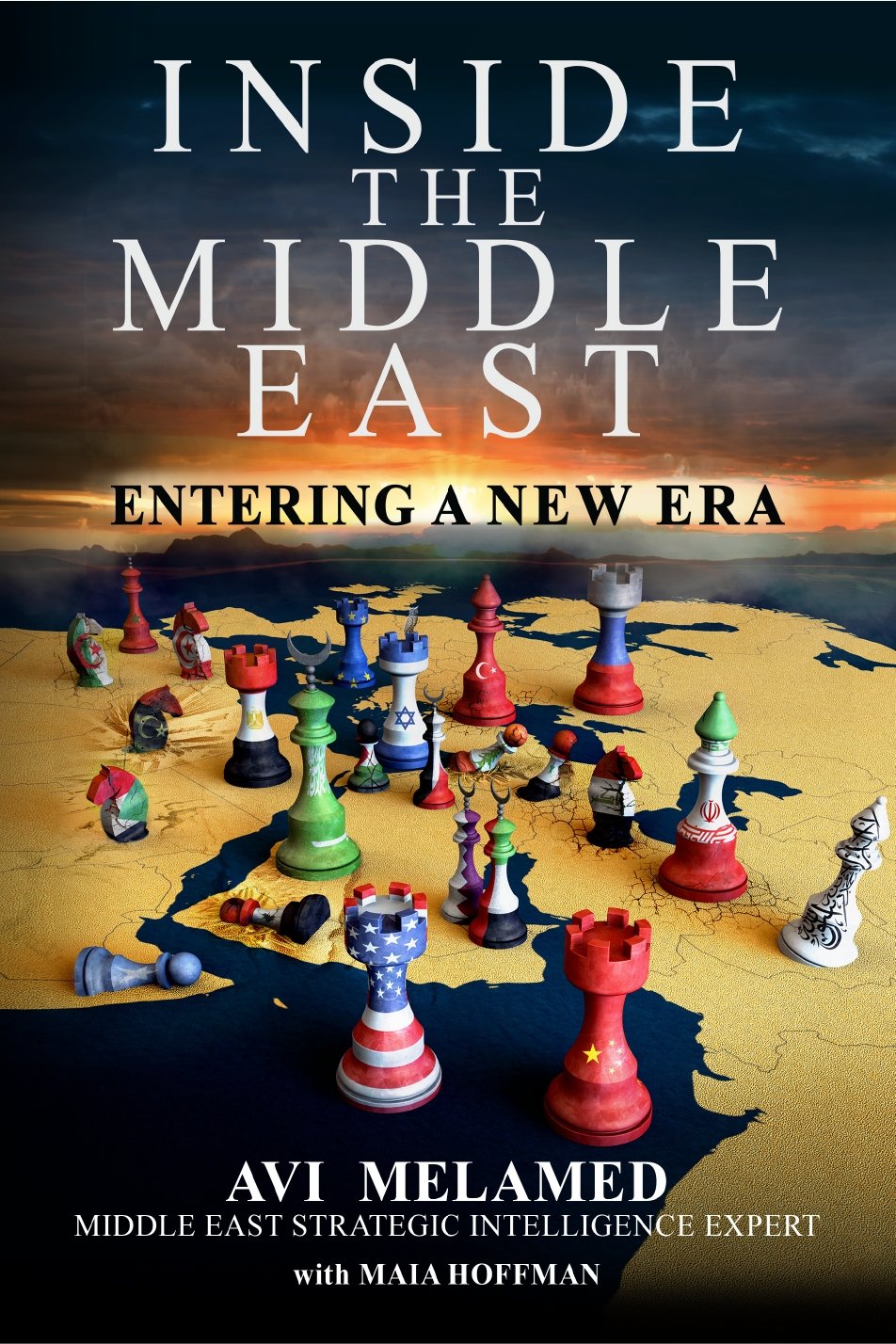|
Getting your Trinity Audio player ready...
|
The Palestinian March of Return: The Boxers Cautious Dance
INTELLIGENCE BULLETIN
Information:
On March 30, 2018, the Palestinians kicked-off a national effort entitled The March of Return Campaign, scheduled to consist of a series of protests and demonstrations centered in the Gaza Strip, and planned to a lesser extent, also in the areas ruled by the Palestinian Authority in the West Bank. (Click here for the article I published on March 29th entitled: Palestinian Campaign – The March of Return: Towards a Burst of Major Israeli – Palestinian Violence?)
The March of Return Campaign is designed to reach its pinnacle on May 14, 2018 – the date which reportedly the US Embassy will formally be moved to Jerusalem, coinciding with the date the State of Israel was established in 1948.
The campaign is steered by a framework called The National Authority of the March of Return, comprised of the major Palestinian political entities representing the broad Palestinian political spectrum – ranging from the Islamic Camp – Hamas and IJIP – Islamic Jihad in Palestine, to Fatah, to the Leftist, Secular forces such as the PFLP – the Popular Front for the Liberation of Palestine and, PPP – the Palestinian Peoples’ Party.
Though the Palestinian spokesperson of The National Authority of the March of Return announced that the protests will be peaceful, and that Palestinians will keep a distance of 700 yards from the Israeli – Gaza border, Israel expresses concern with the possibility that Palestinians will try to storm the border fence and infiltrate Israeli territory. Israel therefore warned that any attempt to cross the fence or to attack Israeli soldiers located on the Israeli side of the fence will meet with a tough Israeli response.
Indeed, since March 30th – to date, reportedly 29 Palestinians have been killed by Israeli Defense Forces apparently during attempts to storm the Israel-Gaza Border fence, and – at least on one documented incident, shooting at Israeli soldiers located on the Israeli side of the border. Most of the Palestinians killed have been identified by Palestinian sources as Hamas, IJIP, Fatah, and PFLP militants.
Analysis:
The two most central and major Palestinian factors involved in the campaign – Hamas and Fatah – in spite of recent attempts at reconciliation, are on a collision track. The Islamist factors and the left wing, secular Palestinian groups’ agendas and ideologies are substantially different from one another – and to large extent, also conflicting. One thus may wonder what bring those factors to join hands in the framework of The National Authority of the March of Return?
On one level, the Campaign of Return represents two cross-sectarian Palestinian consensual narratives: “The Right of Return” and “Jerusalem” (Al-Quds).
The narrative of “The Right of Return” addresses the issue of Palestinian refugees. According to official statistics provided by the UN Relief and Welfare Agency (UNRWA) – the international body responsible for the daily needs of Palestinian refugees based in Arab states, the West Bank, and the Gaza Strip – the original number of Palestinian refugees as an outcome of the Israeli-Arab 1948 War was about 700,00 people. Palestinians argue that the current number of Palestinian refugees and their descendants is around 4,000,000. And they demand to reclaim the properties and homes they abandoned during the war. Those assets were in areas, which – after the war – became a part of the State of Israel, and most of the properties – shops, homes, lots etc. do not exist anymore.
The Palestinian narrative of “Al-Quds” (The Sacred) – the name of Jerusalem in Arabic – has two main versions. In the more pragmatic narrative – sovereignty over Jerusalem should be split. East Jerusalem (the areas that are today part of Jerusalem under Israeli rule which, prior to the 1967 Israeli-Arab war, were either under Jordanian rule or defined as “no man’s land”), the Old City of Jerusalem, the Temple Mount, as well as the Western Wall – will be “Al-Quds,” the Capitol of the Palestinian State. According to that plan, neighborhoods built by the Israeli government in East Jerusalem which are predominately populated by Jews should be evacuated. In its dogmatic version – represented by Hamas or IJIP, the State of Israel should be eradicated. Thus, obviously Jerusalem cannot and will not be split. It will only be the capital of the Palestinian State.
US President Trump’s decision to recognize Jerusalem as the capital of Israel (December 2017) generated an inevitable Palestinian counter-reaction, manifested on the ground by continuing daily protests by Palestinians near the Israel-Gaza border, as well as the use of strong rhetoric expressing Palestinian anger, frustration, and discontent with the current US administration which is clearly not friendly to the Palestinian cause. President Trump’s decision to move the US Embassy to Jerusalem on May 14, 2018 further fueled the Palestinian’s rage – and they have escalated their protests accordingly.
Hence, gathering around those two major narratives – The Right of Return and Jerusalem, The National Authority of the March of Return presents a Palestinian front of unity and consensus, and also provides an organizational structure that manages and steers the campaign.
However, on a deeper level, The National Authority of the March of Return should be viewed in the context of inner Palestinian politics – and particularity in the context of the power struggle between the two major Palestinian factors – Hamas and The Palestinian Authority. Furthermore, the campaign simultaneously presents both Hamas and the PA with a serious challenge – as well as an opportunity for each entity to gain political dividends.
What are the challenge and opportunities the campaign presents and why?
In order to analyze the challenges and opportunities, we need to first examine the three major factors which currently guide the domestic policy of both the Palestinian Authority and Hamas.
- The Ideological and Political Power Struggle between the PA and Hamas
- The Inner Challenges of the PA and Hamas
- The Palestinian Reconciliation Status
The Ideological and Political Power Struggle between the PA and Hamas
Ideological:
The Palestinian Authority and Hamas have conflicting ideologies, strategies, and tactics:
Fatah – Haraka Tahrir Filastin is the backwards acronym for – “The Movement for the Liberation of Palestine.” Fatah is also a term which is associated with the rapid expansion of early Islam through successful military raids.
Fatah is the largest and most powerful party in the Palestinian National Authority (PNA) which rules over parts of the West Bank.
Fatah offers the Palestinians a national identity and path centered around two major guiding values:
Al-Muqawama Al-Madaniyah – “The Civil Resistance” – i.e. forcing Israel to comply with Palestinian demands through the use of political and diplomatic measures – which, according to radical factors within Fatah – will eventually result in the elimination of Israel.
The application of a Parliamentary political structure inspired by civil society and Western affiliated codes as the source for government and legislation, and as the moral code of everyday life of the Palestinians both as a society as well as individuals.
According to Fatah, adopting the Islamic religious law – the Shariah as the guiding code for an individual’s everyday life is a personal choice and decision.
Hamas – “Harakat Al-Muqawama Al Islamiyah” “The Islamic Resistance Movement,” is a Sunni Political Islamic Palestinian Arab movement whose ultimate vision is the creation of an Islamic global entity – The Caliphate. Therefore – ideologically, Hamas completely rejects the concept of statehood and an independent nation state. Thus – ironically, Hamas’ ultimate vision unequivocally objects to the creation of an independent Palestinian state which is based on a national identity.
Hamas, which currently rules the Gaza Strip – is an adherent of Political Islam. Accordingly, Hamas offers Palestinians an identity, path, and direction centered around two major guiding values:
Al-Muqawama Al-Musallaha – “The Armed Resistance” – i.e. militarily fighting Israel until it will be eliminated.
The application of Shari’ah, the Islamic religious law – as the source of government and legislation, and as the moral code of everyday life of the Palestinians both as a society as well as individuals.
According to Hamas, adopting the Islamic religious law as the guiding code for an individual’s everyday life is Allah’s will – and abiding by the Shariah, is therefore mandatory – not meant to be questioned, nor meant to be up to an individual’s choice.
Political:
In June 2007, Hamas’ military force, ‘Ezzedeen al-Qassam Brigades conducted a military coup in the Gaza Strip, killing hundreds of PA people and forcefully terminating the rule of the PA in Gaza.
Since then Hamas controls the Gaza Strip.
Palestinian President Mahmoud ‘Abbas argues that Hamas’ rule and path is a dead-end street, resulting in more misery for the Palestinians, and particularly for the people of Gaza who live under Hamas’ rule.
Hamas’ continuing and compounding crises, which have resulted in increasing challenges for the people in the Gaza Strip – support ‘Abbas’ argument.
The Inner Challenges of the PA and Hamas
The PA and Hamas both face substantial challenges.
The PA faces an unfriendly US administration; reluctant Arab support; and is heading towards a possible inner-political (perhaps even violent) power struggle following the expected end of the Presidential term of the current Palestinian President, Mahmoud ‘Abbas.
Hamas struggles financially; faces growing discontent among the people of the Gaza Strip – fueled by major economic and social stresses; in addition – Hamas’ military and terror tactics have been largely thwarted by Israel; it is defined as a terror group by Western powers; and is harshly criticized by major Arab players for its responsibility for Gaza’s bleak reality as well as for its relationship with Iran.
Palestinian Reconciliation Status
Hamas and the PA are trapped in a crumbling reconciliation agreement brokered by Egypt (October 2017). Though some aspects of the reconciliation agreement were fulfilled on the ground – major controversial issues such as: Hamas’ demand to keep its independent military entity, and ‘Abbas’ refusal to pay the salaries of Hamas’ 40,000 officials in the Gaza Strip, seriously questions the future prospects of the agreement. (For more on this issue, please read my article Tasting the Bitter Pill of Reality: Hamas’ New Political Pact, June 2017).
A most recent incident further cracks the fragile (some say dying) reconciliation. On March 13, 2018 an IED explosion targeted a convoy of the Palestinian Prime Minister, Rami al-Hamdallah and the Head of the PA Intelligence Services, General Majid Faraj during their visit to the Gaza Strip. The two survived the attack, but some of their aides and body guards were injured. Though some Palestinian sources attribute the attack to Salafi-Jihadi groups in the Gaza Strip, Palestinian President Mahmoud ‘Abbas officially holds Hamas accountable for the attack and announced that he intends to impose a set of sanctions on the Gaza Strip. Reportedly, to date he has not yet implemented the sanctions. Hamas, on its side, argues that the PA is the one behind the attack. Thus, the Hamas- PA reconciliation is currently at rock bottom.
However, neither Hamas nor the PA want to be the one viewed by the Palestinians and the Arab world – and particularly Egypt who brokered the reconciliation – as responsible for the failure of that reconciliation.
The domestic policy – primarily guided by the Ideological and Political Power Struggle between the PA and Hamas; the inner Challenges of the PA and Hamas; and the Palestinian Reconciliation Status, coupled with the challenges each of these factors presents to the PA and Hamas – impact their calculations and decisions regarding the character and path of the March of Return Campaign. They must each walk a very fine line and navigate the March of Return campaign very cautiously.
Why?
The answer is that as the March of Return lingers on, it is possible that the number of Palestinian fatalities will increase, and accordingly – the likelihood for a massive Israeli-Palestinian collision.
The possibility of another military confrontation with Israel presents both Hamas and the PA with a significant dilemma which stems from two major factors:
One aspect of their dilemma has to do with the current dire position both are in, given the challenges they both face as outlined above.
Given the current challenges both entities face, and with no solutions in sight, a massive Israeli–Palestinian collision is almost the last card both Hamas and the PA left to play in order to solidify their rule. Therefore, from Hamas and the PA’s point of view – threatening to unleash a massive Israeli-Palestinian collision may force the US, the EU, and other regional players – such as Egypt to positively respond to both Hamas and the PA’s most pressing needs. For example, Hamas wants Egypt to permanently open the Rafah crossing and the PA would like funding to resume from the US administration. Relief from outside entities would enable both Hamas and the PA the ability to address some of their domestic challenges and therefore, relieve some of the domestic pressures on their administrations.
On the other hand, a massive Israeli – Palestinian collision might boost the very challenges and reasons for the dire situation the two are currently experiencing. For Hamas, another military round with Israel may be one round too many – as the Gaza Strip has not recovered yet from the 2014 war. For the PA, a military collision with Israel might bring down the PA – bringing an end to its rule.
At this time, it seems both Hamas and the PA signal their desire to avoid a further escalation:
Hamas’ Political Bureau member, Salah Bardawill, openly urged the US to open a dialogue with Hamas. Chief of Hamas’ Political Bureau, Isma’il Haniyeh, urged the Secretary General of the Arab League Ahmad Aboul Gheit, to charge Israel with war crimes at the International Court of Justice in The Hague. Both appeals, in my analysis, signal Hamas’ desire – for now – to avoid a massive collision with Israel.
As for the PA, one should note the fact that Fatah, the major factor within the PA – has scheduled the assembly of the Palestinian National Council for April 30th during which a new leadership of the movement will be chosen. It is reasonable to assume that Fatah would like to ensure an inner-transition of power that is as smooth as possible. Holding the assembly amid a military confrontation with Israel would contradict that interest. In my analysis, this is a signal that Fatah wishes to avoid a collision with Israel.
The second reason for the dilemma regarding entering into a military confrontation with Israel is that The March of Return campaign is also a stage for the zero-sum game between Hamas and the PA. Each side views the other side’s achievement as a loss for themselves – and both Hamas and Fatah are determined to prevent the other from gaining any achievement. Therefore, based on that perspective – a massive Israeli–Palestinian collision is less preferable for the two. Why?
From Hamas’ perspective, if the Gaza Strip becomes the stage for a massive collision with Israel, that will play into the hands of the PA.
That is because it will increase the PA’s criticism of Hamas, give the PA the opportunity to emphasize its argument that “armed resistance” is leading the Palestinians down a dead-end street, and reinforce that the PA holds Hamas accountable for the dire situation in the Gaza Strip.
Moreover, a military collision with Israel will exhaust Hamas and further weaker its dire situation to the point that Hamas will have to accept the return of the PA to the Gaza Strip as the dominant force.
That could – for example, lead to a situation in which Hamas, out of severe weakness, will have to accept the PA’s demand that Hamas disarm itself (which Hamas is refusing to accept).
From the Palestinian Authority’s perspective, if the West Bank becomes the stage for a massive Israeli-Palestinian collision, it will play to the hands of Hamas.
That is because it will fuel Hamas’ criticism of the PA, give Hamas the opportunity to argue that the PA’s path of “non-violent resistance” damages the Palestinian cause, and leads the Palestinian nowhere.
Moreover, Hamas’ operational infrastructure in the West Bank – which is currently strictly monitored and oppressed by the PA – might seize the moment to try and duplicate the takeover model they applied in the Gaza Strip when they ousted the PA government and took over the rule of Gaza in the bloody coup of June 2007.
Hence, to date, both sides have apparently determined, that between deciding to pursue a path towards a massive collision with Israel, or to avoid such a collision – the latter option better serves their interests.
Yet, both Hamas and the PA must calculate and manage the March of Return campaign very carefully – as it has the potential to rapidly escalate and spin out of control in a very short process.
***
Regional factors and the March of Return Campaign
The Right of Return campaign is also a stage for the different – and to large extent conflicting – interests of Egypt, Turkey, Qatar and Iran.
Egypt plays a constructive, stabilizing role. Turkey and Iran play a destabilizing role. Qatar’s role is yet to be determined.
What dictates these factors position vis-a-vis the March of Return campaign?
Stability in the Gaza Strip is Egypt’s interest. An Israeli-Palestinian massive collision might fuel extremist Islamic and Muslim Brotherhood factors in Egypt and boost unrest among Egyptians, already fueled by the country’s economic challenges. Egypt’s interest, therefore, is that the Palestinian campaign will remain confined and restrained. That explains the fact that Egypt maintains constant open communication channels with both Hamas as well as the PA towards a goal of preventing a further escalation on the ground.
Turkey’s position vis-a-vis the Palestinian campaign is dictated to a large extent by its growing rivalry with Egypt. Turkey sponsors and supports the Muslim Brotherhood which is persecuted by the current Egyptian government of Abdel Fattah el-Sisi. In that context, Turkey recently hosted the Celebration of the 90th Anniversary of the Muslim Brotherhood and one of the keynote speakers was Khaled Mashal, the former Chief of Hamas’ Political Bureau. Turkey and Egypt are also at odds regarding the extraction of gas from the Mediterranean Sea. In that regard, Turkey recently announced that it does not recognize the Egypt–Cyprus territorial water agreement signed in 2013 that allows exploration for gas in the area. From Turkey’s perspective, an escalation of the situation in the Gaza Strip has a couple of benefits – it would jeopardize Egypt’s goal of stability and it would enable Turkey to take the lead as the defender of the Gaza Strip and of the Palestinian campaign – thus scoring points among Arab public opinion at the expense of Egypt. Indeed, following the events on the Gaza-Israel borders on March 30th, Turkish President Erdogan rushed to accuse Israel of war crimes. One could expect more of the same to come from Turkey.
Qatar sponsors and supports the Muslim Brotherhood and is a major sponsor of Hamas. To date, Qatar’s investment in residential projects, infrastructure and public facilities projects in the Gaza Strip is estimated at half a billion dollars. Qatar’s support for the Muslim Brotherhood has been a source of escalating tensions between Qatar and Egypt since Al-Sisi came to power. The Qatari owned Al-Jazeera news network’s unfriendly coverage of the Egyptian president and of the Egyptian government, have further deepened the tensions. The tension turned into an open collision when Egypt joined the blockade and the sanctions imposed on Qatar by the GCC in June 2017. Al-Jazeera is known to not only be a news conveyor, but also as news creator – often fueling demonstrations and inciting discontent and violence. Al Jazeera’s behavior in that regard is not confined to the Israeli-Palestinian conflict. Arab states such as Egypt, Jordan, and Tunisia more than once took tough measures to limit Al-Jazeera’s activity – accusing the network of inciting and promoting instability. As expected, Al-Jazeera provides wide coverage of the March of Return Campaign, focusing on the demonstrations in proximity to the Gaza-Israel border. Yet, one should note that to date the network’s coverage of the March of Return is relatively mostly confined to reporting – and less making, the news. This may signal Qatar’s interest to refrain – as of now – from fanning the flames. That position may stem from the fact that Qatar is seeking the help of the United States to mediate a solution to end the GCC’s blockade. In fact, the Emir of Qatar, Sheikh Tamim Bin Hamad al-Thani , is scheduled to meet with US President Trump on April 10, 2018. Fueling the flames of the Palestinian campaign will not be viewed positively by the US, and Qatar does not want to risk US mediation to end the blockade and Qatar’s isolation.
Of the four regional players mentioned, Iran has a clear interest in a massive Israeli-Palestinian collision. Since the Islamic Revolution in 1979, when the current Mulah Regime came to power, Iran has methodically, deliberately, strategically and sophisticated positioned itself as the spearhead of the “Axis of Resistance” (Al-Muqawamah) under the slogan of “fighting Israel to liberate Palestine.” That position has been very useful in the service of Iran’s hegemonic aspirations. (On the issue of Al-Muqawamah I have published many articles. Read for example my article Muqawama, Money, Missiles ~ July 2014).
As Iran’s expansionist vision seems to gain momentum over the past few years, the most senior leaders of the Mullahs regime in Iran brag that Iran controls four Arab Capitols – Beirut, Damascus, Baghdad and San’aa. Therefore, today Arabs – as well as the US administration – view Iran under the Mullah regime as the biggest source of threat and instability.
One should note that the pinnacle of the March of Return campaign is scheduled for May 14, 2018 which coincides with May 12, 2018 – the date President Trump’s ultimatum to the European Union to join the United States’ demand to change the nuclear agreement signed with Iran (the JCPOA) expires. A massive Israeli-Palestinian collision around that time could play into Iran’s hands in a number of ways:
First, Iran will argue that the Israeli-Palestinian conflict – not Iran – is the source of instability in the region. Germany, the UK and France, who resent the tough US line towards Iran and object to abolishing the JCPOA, will be a receptive audience to Iran’s argument – thus it may improve Iran’s negotiation position at that time.
Second, a massive Israeli-Palestinian collision will “validate” Iran’s argument that its aggressive regional expansion policy is required in the service of the vision of “liberating Palestine.” That Iranian calculation is valid to a certain extent – as one can expect that argument may win Iran some PR points in the Arab and Sunni Muslim world. However, it is unlikely to reverse the current rising tide of growing animosity and increasing resentment in the Arab and Sunni Muslim world towards Iran.
Evaluation:
To date, it seems the dominant tendency of both Hamas and the PA in The March of the Return Campaign is to avoid the scenario of a massive collision with Israel. That tendency stems not only from the practical calculations of the two central Palestinian political entities – Hamas and the PA. In my evaluation, it also reflects a developing inner-Palestinian recognition that the path of non-violent resistance is likely to better serve the Palestinian cause.
For Hamas, who embrace and praise the concept of “armed resistance” – it is bitter pill to swallow. However, the fact that the March of Return Campaign reflects a broad Palestinian political spectrum enables Hamas to sweeten the bitter medicine. As Hamas could argue that they are tuned to the pluralistic Palestinian fabric, and are acting as a responsible factor who does not sacrifice the Palestinian national interests on the altar of its ideology.
The campaign also presents Israel with a serious challenge. Israel draws red lines and emphasizes that it will not hesitate to risk a massive collision if those lines are to be crossed. However, Israel’s interest is to avoid such a development. Therefore, Israel needs to calculate its actions and reactions cautiously as well.
To date, though reportedly 29 Palestinians have been killed since the launching of the campaign on March 30th, the situation seems to be under control on both sides.
Of all the relevant regional players, the most substantial one vis-a-vis the course and outcomes of the Palestinian campaign is Egypt who already plays a significant role in easing the tense situation through operating channels of communication with all sides.
Prediction:
The March of Return Campaign has the potential to significantly deteriorate. The combination of an accumulating death toll on the Palestinian side, together with Palestinian frustration and the dire situation in the Gaza Strip – as well as the lack of a mediation process could result in a short and rapid escalation which could lead to a massive Israeli-Palestinian collision.
However, it is likely that in the foreseeable future, the Palestinian March of Return Campaign will be confined to a silently mutually agreed upon set of Israeli-Palestinian ground rules aimed to prevent a further deterioration.
Simultaneously, it is likely that the coming weeks will witness an intensive exposed diplomacy track in addition to back-channel diplomatic activity involving Israel and the Palestinians, as well as Egypt, Saudi Arabia, Jordan, and the US.
The diplomatic activity will likely strive to revive the momentum of the currently crumbling Palestinian Reconciliation.
The possible outcome of that process could be in the shape of arrangements in the Gaza Strip that will enable both Hamas as well as the Palestinian Authority to mark achievements, yet at the same time, force the two to compromise their positions regarding two major controversial issues – Hamas’ military capacities and the salaries of Hamas’ 40,000 officials. It is beyond my ability, at this point, to foresee what may be the exact characteristic of arrangements – should they be achieved – regarding those issues.
CLICK HERE TO DOWNLOAD PDF OF THIS INTELLIGENCE BULLETIN
If you want to have a better understanding of the news and what really drives the unfolding events…
Read the latest book of Avi Melamed,
INSIDE THE MIDDLE EAST | ENTERING A NEW ERA, available now >>>
Follow me on Twitter @AviMelamed; Facebook @InsideTheMiddleEast; for more Videos on YouTube https://www.youtube.com/c/AviMelamed
I can always be reached at Av*@********ed.com































































